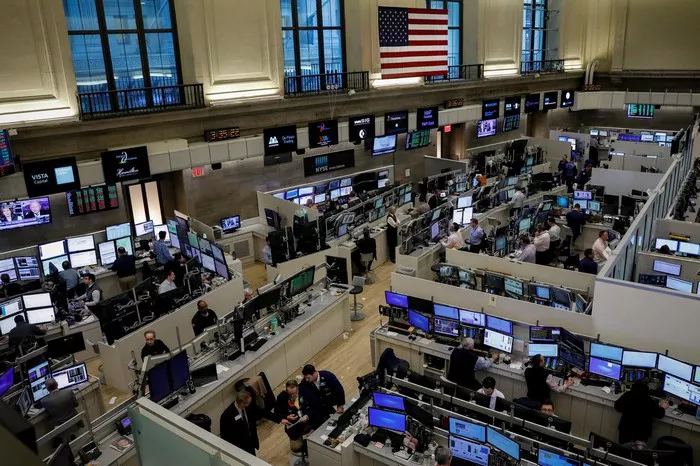Asia-Pacific equity markets saw a mixed performance on Thursday as investors assessed the potential consequences of a Donald Trump presidency and awaited key monetary policy decisions from the U.S. Federal Reserve and other central banks.
While the prospect of a Republican sweep fueled optimism in the U.S., driving all three major stock indexes to new record highs, similar gains were not mirrored in Asian markets. Investor concerns centered on the fiscal implications of such a victory, with U.S. Treasury yields climbing sharply on expectations of higher deficits. This pushed the dollar to its most significant one-day rally in over two years against major currencies on Wednesday.
In Europe, the euro faced added pressure after German Chancellor Olaf Scholz dismissed his Finance Minister, Christian Lindner, leading to the collapse of the ruling three-party coalition.
The Asian markets’ mixed performance was highlighted by Japan’s Nikkei 225 index, which reversed initial gains to fall by 0.44% to 39,308.55 at 0217 GMT, while the broader Topix index remained up by 0.88%. The rise in bond yields, with the 10-year U.S. Treasury yield reaching 4.4236%—close to Wednesday’s four-month peak of 4.4790%—and Japanese government bond yields climbing to 1% for the first time in three months, helped boost shares in Japanese banks and insurers but weighed on tech and growth stocks.
“In such volatile times, investors must be selective in Japan,” warned Frank Benzimra, head of Asia equity strategy at Societe Generale, adding that the Nikkei’s current levels appeared stretched. “When the Nikkei is at this level, I feel very uncomfortable,” he said.
Elsewhere in the region, South Korea’s Kospi index edged down 0.14%, and Australia’s equity benchmark fell 0.24%, partly due to a drop in gold stocks as bullion prices slid amid a stronger dollar. Chinese markets, which had taken a hit on Wednesday amid concerns over potential U.S. tariffs under a Trump presidency, saw a rebound. Hong Kong’s Hang Seng index rose by 0.49%, and mainland blue chips added 0.14%.
Market participants were closely watching China’s ongoing National People’s Congress Standing Committee meeting, expecting potential announcements of stimulus measures. New trade data from China showed a significant jump in exports in October, the fastest pace in over two years, as manufacturers sought to move inventory ahead of anticipated tariffs from the U.S. and the European Union.
Some analysts, like Chris Weston of Pepperstone, suggested that weakness in markets like China and Europe could be due to a shift in investor preference toward U.S. assets, driving demand for the dollar.
U.S. stock futures remained largely flat to slightly higher on Thursday. European markets showed a mixed outlook, with pan-European STOXX 50 futures down 0.04%, but German DAX futures gaining 0.1%, following a 1.1% decline on Wednesday.
In Germany, Chancellor Scholz sought support from the opposition conservatives to pass a budget and increase military spending after a fallout with his coalition partners. The euro stabilized at $1.0733, following a sharp 1.82% drop the previous day, marking its biggest one-day decline since March 2020. The dollar index, which tracks the greenback against six major currencies, stood at 105.04 after a notable 1.53% jump on Wednesday.
While markets largely expected the Federal Reserve to cut interest rates by 25 basis points at the conclusion of its two-day meeting on Thursday, they scaled back expectations for further cuts in December. Analysts suggested that Trump’s proposed tariffs and immigration policies could stoke inflation, thereby complicating the Fed’s path toward further easing.
“The key challenge for the markets is balancing the immediate inflationary risks from potential tariffs with the long-term concerns over slower growth,” said Justin Onuekwusi, Chief Investment Officer at St. James’s Place.
Meanwhile, the Bank of England is anticipated to reduce interest rates by a quarter point on Thursday, marking only the second rate cut since 2020. However, the major question for investors is whether the BoE will indicate its future policy direction following the government’s inflationary budget.
The British pound rose by 0.28% to $1.2915, recovering from a 1.24% drop the previous day. Sweden’s Riksbank is expected to lower rates by half a point, while Norway’s central bank is likely to keep its policy unchanged.
In the cryptocurrency market, Bitcoin saw a slight decline of 1% to $75,200, after briefly hitting a record high of $76,499.99 the day before. Trump’s stance on cryptocurrencies has been seen as supportive, potentially influencing this price action.
Gold prices remained under pressure, dipping further to $2,657.58 after a sharp 3% drop on Wednesday. However, the precious metal remained close to its recent record peak of $2,790.15.
Crude oil markets were also impacted by the strengthening dollar on Wednesday but showed signs of recovery on Thursday, supported by concerns over oil supply risks under a Trump presidency and a developing hurricane in the Gulf Coast. Brent crude rose by 0.35% to $75.18 per barrel, while U.S. West Texas Intermediate (WTI) crude gained 0.22%, reaching $71.85.
Related topics:


